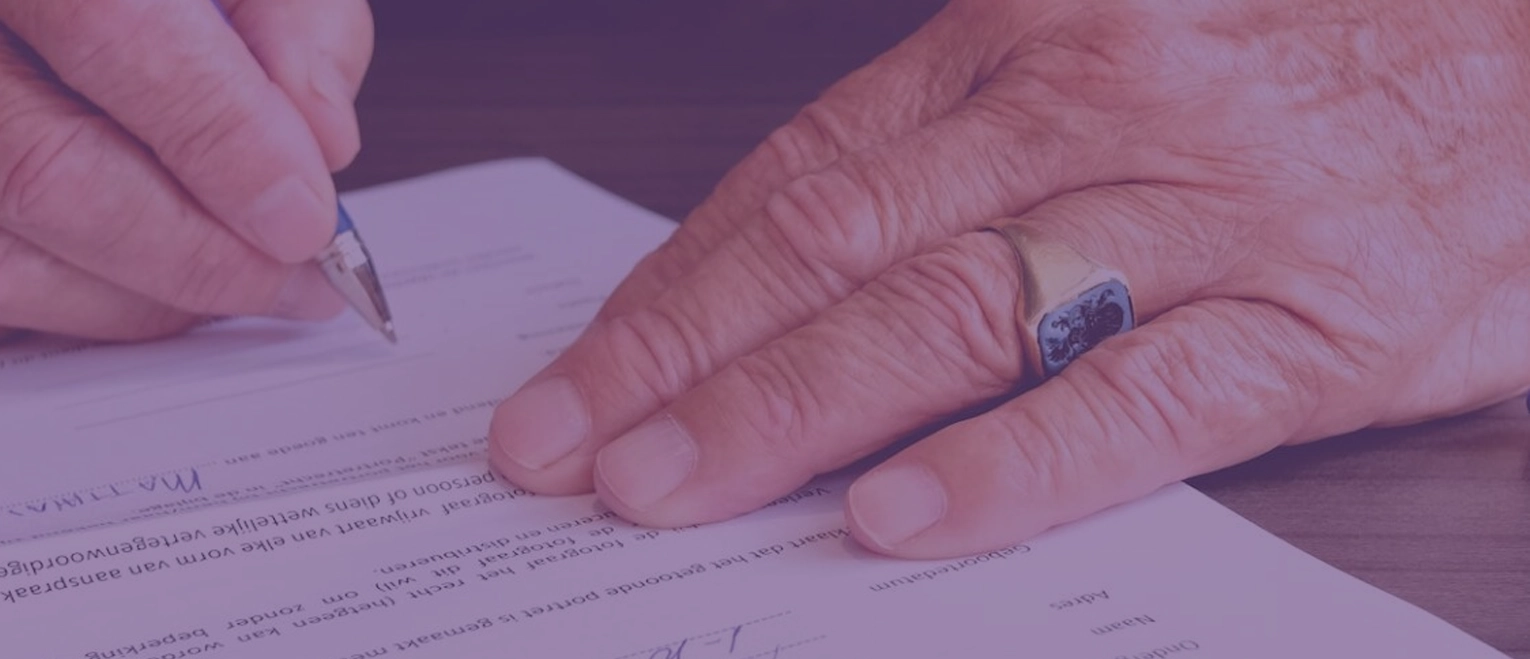The Ultimate 2024 Guide to Long-term Disability Claims in Ontario
Long-term disability claims in Ontario are a serious problem for people who have been badly hurt in an accident, or been diagnosed with a severe and debilitating condition or illness.
Verkhovets Law, long-term disability lawyers in Ontario, have prepared this ultimate 2024 guide to long-term disability (LTD) claims. We are personal injury lawyers and on this page, we explain in plain English what long-term disability is all about. Grab your favourite beverage and a comfortable chair and read on.
You cannot apply for long-term disability benefits unless you have an LTD policy, purchased independently or through a group LTD policy from your employer.
And yet, our Toronto long-term disability lawyers have seen hundreds of people whose long-term disability claims have been denied. If this is your situation, contact us right away.
If you’re in a hurry for answers, here are the sections of the Ultimate 2024 Guide to Long-term Disability Claims in Ontario:
- What is a long-term disability insurance policy in Ontario?
- Why buy a long-term disability insurance policy?
- Where can you buy a long-term disability policy?
- What are the 3 different types of long-term disability policies?
- List of health conditions that quality for long-term disability in Ontario.
- Four critical things to know about your long-term disability policy.
- How insurance companies decide when to pay out long-term disability claims
- What is the “elimination period?” And how does it affect long-term disability payments?
- When I file a long-term disability claim, how much money will I get?
- How long do long-term disability payments continue after a serious accident?
- What other long-term disability benefits are available to me in Ontario?
- How to file a claim for long-term disability benefits.
- How to appeal when your long-term disability benefits are denied.
- Why you need a long-term disability lawyer to help with your LTD appeal.
1. What is a long-term disability insurance policy in Ontario?
In a nutshell, say the Ontario long-term disability lawyers at Verkhovets Law, long-term disability insurance is a type of insurance policy. Like all insurance policies, they provide protection when things go badly in life. Long-term disability policies provide income replacement (also called benefits) when you are unable to work for three months, or longer.
Not all insurance companies provide the same level of coverage; our Toronto long-term disability lawyers advise clients to read the fine print contained in their long-term disability policies. With any insurance policy, it is always wise to know exactly what coverage you are buying.
However, long-term disability policies are complicated and can have many clauses and exclusions (called pre-existing conditions) that may be used by an insurance company to deny you the benefit payments you thought you paid for, in years and years of paying monthly premiums.
2. Why buy a long-term disability insurance policy?
A long-term disability insurance policy is income protection in the unfortunate event that you are involved in a serious accident or diagnosed with a serious temporary illness or a permanent, debilitating health condition. More than one long-term disability lawyer at Verkhovets Law has observed that no one can predict the future, a long-term disability insurance policy gives people peace of mind that at least some of their income will be replaced while they recover from a serious accident, or when they are diagnosed with a serious health condition.
It may be a cliché, but many people take good health for granted. And yet the reality is that many people in Ontario will become diagnosed with a debilitating illness that could jeopardize their future. Imagine not being able to pay your mortgage or rent, for months, because you are unable to work.
For example, you could become disabled as a result of a serious accident, or you could develop sudden symptoms of a condition or severe illness, physical or mental. There is a negative spiral that people experience: you have a variety of symptoms and may be in severe pain. You are seeing multiple specialist doctors for diagnosis and treatment. During this process, it is likely you are unable to work, unable to earn income to support yourself and your family. Meanwhile, the bills keep piling up. Very quickly, it can become a desperate situation!
And yet, our Toronto long-term disability lawyers have seen hundreds of people who have such an insurance policy and whose long-term disability claims have been denied. If this is your situation, contact us right away.
3. Where can you buy a long-term disability policy?
You can buy a long-term disability policy from an insurance company. You can buy a long-term disability insurance policy on your own, as income protection, in the unfortunate eventuality that you become disabled in the future. Some employers also offer long-term disability policies, that you can purchase through so-called group plans that offer good long-term benefits (payments to you) at favourable rates, notes one LTD lawyer at Verkhovets Law.
Here are the three factors in a long-term disability insurance policy that affect your coverage:
- The long-term disability coverage you take out – coverage can include both physical and mental conditions. Be aware that there may be monthly maximums that limit the amount of payments you receive.
- The insurance company you use – as with any insurance policy, it pays to shop around and compare prices for a long-term disability policy.
- The monthly premium you pay – the terms and conditions of your selected policy will set out the monthly payment amount, as well as how long you can expect to receive benefits.
Sometimes, your insurance company will deny your long-term disability claim and refuse to pay your benefits when you need them. That’s when you need a long-term disability lawyer at Verkhovets Law, to fight for the benefit payments you are entitled to. Contact us now, if your long-term disability claim has been denied. We can help.
4. What are the 3 different types of long-term disability policies?
There are 3 types of long-term disability plans that you can buy from private insurance companies:
- Individual plans – You buy these directly from an insurance company that offers long-term disability policies. The purpose of individual plans is to provide income protection in the event that you are unable to work. Payments typically last 2 to 5 years (the time to recover from a severe accident, or a temporary illness. Or, in the situation where you a diagnosed with a permanent health condition, payments last until age 65.
- Group plans – Group long-term disability plans are available from some employers, unions, or your professional association. They are offered as income replacement if you cannot work due to illness or an accident. The big advantage of group plans is that your employer pays a portion of the cost of the monthly premium, making these plans more affordable.
- Special purpose plans – special purpose plan are designed to insure you against specific, negative life events such as critical illness insurance, dismemberment insurance, and creditor’s insurance. Travel insurance and life insurance are also so-called special purpose plans.
5. List of health conditions that qualify for long-term disability in Ontario
Here are some health conditions, including physical and mental, that qualify for a long-term disability claim, and if your claim is successful, for long-term disability benefits. If you’re unsure about your coverage, contact a Toronto long-term disability lawyer at Verkhovets Law. We’re here to help.
There are no specific conditions that trigger long-term disability (LTD) benefits. Your long-term disability insurance company will consider a range of factors when it comes to evaluate whether your condition receives coverage.
- Autoimmune diseases
- Cancer
- Bipolar disorder
- Breast cancer
- Chronic pain
- Digestive system disabilities
- Endocrine disabilities
- Huntington’s disease
- Lung and respiratory disease
- Mental illness
- Multiple sclerosis (MS)
- Musculoskeletal disabilities – common after a serious accident
- Neurological disorders
- Post-surgery complications – common after a serious accident
- Prostate cancer
- Serious orthopedic injuries – common after a serious accident
- Schizophrenia
- Speech disorders
- Spinal cord injuries – common after a serious accident
Contact the Toronto long-term disability lawyers at Verkhovets Law for conditions that are not in the above list. They can advise you better about your long-term disability claim.
6. Four critical things to know about your long-term disability policy
- Your long-term disability policy comes into effect when you are unable to work for three months, or longer.
- You can use your long-term disability policy if you have been involved in a serious accident, or if you have been diagnosed with a serious temporary illness, permanent health condition, or a mental illness.
- Every long-term disability policy has an “elimination period,” or waiting period or qualifying period. If you opt for a longer elimination period in your policy, your monthly insurance premiums will be lower.
- Your long-term disability policy usually pays out every month, just like your salary, once your insurance company has approved your claim to receive payments.
7. How insurance companies decide when to pay out long-term disability claims
To start, an insurance company will look at your medical condition in relation to their own definition of “total disability” in terms of your long-term disability policy.
Most insurance companies will only pay benefits if you are “totally disabled.” You may have a condition such as early onset of Parkinson’s disease, for example, but not be considered “totally disabled” and therefore receive no immediate long-term disability benefits.
Your long-term disability benefits may be denied because you are still able carry out some of your job duties at your employer’s, and so still able to earn income. However, as your disease worsens, you may qualify for long-term disability benefits at a later stage.
It is worth mentioning that there are insurance companies that will approve a disability claim regardless of whether you can still perform some tasks at your place of employment. Because of not being able to earn the same income as you did before your disability, you will receive long-term disability benefits (monthly compensation).
Your insurance company will focus on your medical condition and how and to what extent it renders you disabled. A big part of determining whether to pay your long-term disability claim, of course, are your medical records.
After reviewing your medical records, the next consideration for insurance companies is your treatment plan. Your treatment plan is critical when determining whether to pay your long-term disability claim.
It has happened to hundreds of people that the insurance company denies or terminates your long-term disability benefits if it does not agree with your treatment plan. If this has happened to you, contact the Toronto long-term disability lawyers at Verkhovets Law.
8. What is the “elimination period?” And how does it affect long-term disability payments?
The “elimination period” is the time between the start of your disability and the start of your long-term disability benefits, or payments. It is also referred to as the “qualifying period” or “waiting period.” All long-term disability policies have “elimination period.”
This waiting period or elimination period varies depending on the insurance company’s terms and conditions. The “elimination period” varies between 90 and 120 days. If you opted for a longer elimination period, your insurance premiums will be lower. If you’re unsure of your elimination period, contact the Toronto long-term disability lawyers at Verkhovets Law. We will help you.
If you need financial help during the elimination period, you can apply for short-term disability (STD) insurance until the elimination period ends. Short-term disability benefits typically last a maximum of 6 months.
9. When I file a long-term disability claim, how much money will I get?
Your long-term disability policy will likely pay out between 60 and 80 per cent of your salary, but not 100 per cent. As well, your payments will limited to a specific portion of your annual salary, in other words, income caps.
It is rare that a long-term disability policy will pay 100 per cent of your salary, but there are policies that do just that. If you are a high income earner (president, CEO, business owner with many employees, etc.), you may want to speak to the insurance company, to see if there are executive plans for you. These executive plans have much higher monthly premiums.
Payments will continue for 2 to 5 years following a severe accident, during your recovery. Your long-term disability policy will likely provide monthly disability payments (benefits), until you turn 65 years old if you have a permanent disability.
10. How long do long-term disability payments continue after a serious accident?
Many victims who have been seriously injured in an accident need long-term disability payments says one LTD lawyer at Verkhovets Law. If you are applying for long-term disability benefits after an accident, the first 2 years are when you will receive LTD benefits during your recovery.
Here’s where the language of the insurance industry gets complicated. Typically, after an accident, the accident victim cannot work in their “own occupation.” If you are unable to perform essential duties in your chosen or usual employment field, the insurance industry deems says that you cannot work in your “own occupation.” In this case, you will be entitled to long-term disability benefits, says an LTD lawyer at Verkhovets Law.
Afterward, insurance companies will only continue to pay the long-term disability benefit if the accident victim cannot return to “any occupation.”
On the other hand, if after two years you are able to perform work in “another occupation,” other than your chosen field of work, then your benefits may stop because you do not qualify under the “any occupation” criteria.
Usually after 2 years, or the “own occupation period,” you will need to reapply to the insurance company for further long-term disability coverage. The insurance company will then reassess whether you are able to perform job duties in any other occupation.
Long-term disability payments continue until the accident victim is well enough to start working again or until the coverage period terminates, which is usually at the age of 65, whichever comes first. As an example, long-term disability payments could continue for decades, if the recipient is aged 42 at the time of the accident.
11. What other long-term disability benefits are available to me in Ontario?
In addition to long-term disability policies from private insurance companies, there are also long-term disability benefits from the Province of Ontario and Federal long-term disability benefits from the Government of Canada. There is also the Disability Tax Credit.
Ontario Disability Support Program (ODSP) – The Ontario Disability Support Program (ODSP) is type of long-term disability insurance for which all Ontario residents are eligible, provided they meet the financial and disability requirements.
First, ODSP is a safety net for financially needy and low-income people; if you meet but do not exceed the financial threshold, you may be eligible. Second, your disability will be assessed. ODSP provides a monthly payment if you qualify.
Many have commented that the amount of monthly payments is very low, but some money is better than none.
Canada Pension Plan Disability (CPPD) – The Canada Pension Disability Plan is available to Canadians who have worked and paid into the Canada Pension Plan (CPP). The CPPD only applies in the event that you a have physical or mental disability that prevents you from continuing your current employment or finding new employment. A heads-up: the CPPD can take more than a year for you to actually see any payments.
Disability Tax Credit (DTC) – Provided by the federal government of Canada, the Disability Tax Credit does not pay out monthly sums, but like all tax credits, provides you a refund on federal taxes you have already paid.
Like the CPPD, almost anyone who is a resident and pays taxes in Canada can qualify for this disability benefit. If you suffer from a disability, but are not a taxpayer (you have low income), you can claim CPPD if you are a dependent of someone who does pay taxes, such as your mother, father, or guardian.
If you have a child who is diagnosed with a disability, the child benefit pays out an amount each month.
12. How to file a claim for long-term disability benefits
When it comes to filing a claim in terms of your disability policy, there are important steps to follow to receive your LTD benefits. The disability insurance lawyers at Verkhovets Law are well-versed in all these processes and procedures and are here to help you.
First things first, you must have coverage for long-term disability benefits. This plan can be through an employer or an independent insurance broker. You must also have been off of work for a long period due to your disability.
Once you have all the basics, follow the below 7 steps to file a claim.
STEP 1: Determine the elimination period of your policy
All long-term disability policies have an elimination or waiting period. Whether it’s 90 days or 120 days, it’s critical to know this before you start the application because it affects when you will receive your LTD benefits.
Some insurance companies allow claim applications during the elimination period. Then, once the elimination period ends, you will receive your LTD benefits, but this is not the case with all insurance companies.
The waiting period is different from one policy to another policy. Check what your long-term disability policy says about the elimination period and when you can apply for LTD benefits.
STEP 2: Consolidate your medical records
This is the most important part of your long-term disability claim process. Speak with your doctor(s) to find out whether they support your long-term disability claim. It’s unlikely that your LTD claim will be successful if your doctors don’t endorse your long-term disability application.
Consolidate all your necessary medical records that clearly set out your medical condition. These important medical records should also clearly set out your treatment plan, like a rehabilitation program. This all impacts the success of your long-term disability benefits claim.
Remember that your insurance company will be determine whether your medical condition has made you totally disabled, or not.
STEP 3: Advise your long-term disability insurance company that you will apply for benefits
Give your long-term disability insurance company the heads-up that you will be filing a claim, thereby applying for benefits. Your insurance company will likely send you an application package and instructions on how to complete it, thereby minimizing delays.
STEP 4: Complete the LTD application package
You will need to complete the LTD application package. You can obtain this application package from the insurance company itself or from your HR representative at work, your employer, your union rep, or your insurance broker if you have one.
Follow the instructions provided carefully and complete each form and give as much detail as possible. Attach all necessary supporting medical reports and make sure it is all clearly and correctly labelled so that referring to each medical report is clear and straight forward.
Most application packages include three main forms which you will need to complete:
- Notice of claim, which the claimant (person requiring LTD benefits) must complete.
- Employer’s report, which the employer must complete. This document states the claimant’s duties at work and their time away from work since the disability.
- A medical report is completed by the doctor dealing with your disability.
On each form, you will need to complete your personal information and information relating to your accident, illness, or medical condition. Insurance companies deal with thousands of claimants, so if your form or forms get misplaced, they will be clearly marked as yours.
The purpose of the application package is this: to have one complete set of documents that clearly show that you are totally disabled and entitled to LTD benefits.
STEP 5: Submit the application package with medical reports
Once you have completed all the documentation and had all forms signed by the relevant parties, submit the application with all supporting documents directly to your long-term disability insurance provider.
Send the entire long-term disability application package, together with your supporting documents (medical reports) all together. Do not send it piecemeal; parts are likely to get lost and add delay to your application.
Make sure that it includes all of these:
- Your completed and signed application form.
- An additional sheet that sets out all the supporting documents attached, their titles, and page numbers.
- The medical form that has been completed and signed by your medical doctor or medical practitioner.
- Your employment form (completed and signed by your employer).
- A cover letter setting out all attached documentation.
STEP 6: When your insurance company has a request about your application, cooperate
After submitting your application and all your supporting documentation, you will need to wait. Frequently, your insurance company will have questions or need more information. Respond to their request for more information as soon as possible so there are no delays in evaluating your claim and paying out your long-term disability benefits.
Here are the most common requests for more information:
- Confirmation of any outstanding information – this could be by telephone.
- Provide any medical records not included in the application package to the long-term disability insurance company.
- Need more information from your medical practitioner.
STEP 7: Wait for your insurance company to decide
Once you have completed your application package and sent it to your insurance company, you wait. Typically, the insurance company should get back to you between 30 to 60 days. This is in the event that there were no delays in getting any other information or supporting documentation to the insurance company when requested.
You may receive the decision via a telephone call, a letter through the mail, or an email directly from the insurance provider.
If you receive approval for your LTD benefits claim, you must take the time to read through the approval letter to understand all the terms and conditions. It is often in the approval letter that the insurer will inform you to reapply for LTD benefits after year two of receiving payments.
If, however, your long-term disability claim is denied or rejected, you are within your rights to request reasons for the denial and ask that the insurer reconsider your application. This process is called an appeal.
13. How to appeal when long-term disability benefits are denied
In some very unfortunate instances, your long-term disability claim may be denied. When this happens, you may feel overwhelmed and panicked but you need to remain calm and remember that you have a right to appeal the decision.
Luckily, most disability plans in Ontario follow the same appeal process. Below, we take a look at the steps.
STEP 1: Get the decision in writing
Get the decision of your insurance company in writing. Remember that a long-term disability policy is a contract; in law, a document speaks for itself. You need to have written proof that your claim was really denied and why.
Then, you can decide if you want to appeal the decision or if the denial of benefits is justified.
STEP 2: Determine the deadline for your appeal
If you are going to appeal the decision, you must do so within deadline. Depending on the type of plan, there may be different time limits. For example, if you are appealing the decision of a Disability Insurance Policy, you have between 30 and 90 days to do so.
For CPP disability benefits, you have 90 days to appeal a decision. For ODSP, you only have 30 days to file an appeal. Deadlines are critical; failing to file an appeal by the deadline means your appeal will not even be given consideration by your insurance company. Deadlines from insurance companies are serious business.
STEP 2: Learn the reason(s) why your long-term disability claim was denied or rejected
You may receive a letter in the mail denying your long-term disability benefits. Does the letter clearly spell out why your claim was denied? If not, find out the reasons why your long-term disability payments were not approved.
Next, you will need to address each reason given by the insurance company, one by one. You need to show the insurance company why they are wrong.
Common reasons to deny or reject your long-term disability claim include:
- The application package was filed late
- Information or documentation is missing
- Change of disability definition – this could be tricky
- Not communicating with the insurance company
- Not following the advice of your doctor
- Discrepancies in your story – your story must be consistent
- Pre-existing medical conditions – that were explicitly excluded in your long-term disability policy
STEP 3: Assemble more evidence to for your case
Once you know the reasons for your denied long-term disability claim, you must to gather all your evidence to show why the reasoning is wrong. For example, if a reason for denial is not submitting a specific document, you may want to show evidence that shows that the document was emailed or posted to the insurance company.
STEP 4: Write the appeal letter
Then, take all the reasons and your evidence and write an appeal letter that presents all this coherently and logically. Make sure you have all your information correct, especially dates, and maintain a professional tone throughout the letter.
Here’s what to include in your letter: 1) That you intend to appeal, 2) The new evidence attached and how it relates to the appeal, and 3) A short paragraph stating why each reason for denial from the insurance company is wrong.
STEP 5: Send the letter, additional supporting documents, and wait for the decision
Waiting to hear from an insurance company about your appeal of your denied long-term disability claim is nerve wracking, but there is little else to do. Just wait.
14. Why you need a long-term disability lawyer when your claim has been denied.
A disability lawyer at Verkhovets Law, Toronto, will tell you that litigating a disability claim is an extremely complicated process: many specialists to see about your accident or injury, many forms to fill out, and a lot of waiting time in between. Talking to us before you make a claim is the best way to avoid being wrongly denied in the first place.
The personal injury lawyers at Verkhovets Law are used to decoding policies written in such deliberately convoluted language it’s no wonder they’re often misunderstood.
Disability insurance is lucrative (and pricey) and insurers are in business to make money – not pay you – even if you make an honest mistake completing an LTD benefits claim form.
Would your insurer really deny your disability claim based on a technicality, or an improperly filled-out form?
Yes, they would. And, yes, they do.
Our Toronto long-term disability lawyers have gone to battle with an insurance company that relishes at the prospect of someone slipping up on their disability claim and denying them their coverage.
When your long-term disability claim has been dismissed by an insurance company, don’t get angry and don’t give up. Get the right lawyer: a Toronto disability lawyer at Verkhovets Law can help. Our personal injury firm has helped hundreds of people successfully obtain their long-term disability benefits.
Don’t assume you understand everything the policy is saying. Our Toronto disability lawyers will translate it for you into plain English. We know how insurance companies think and act. And what we need to do, to help you with your denied long-term disability claim. Contact us today. We help you get a fair settlement.






